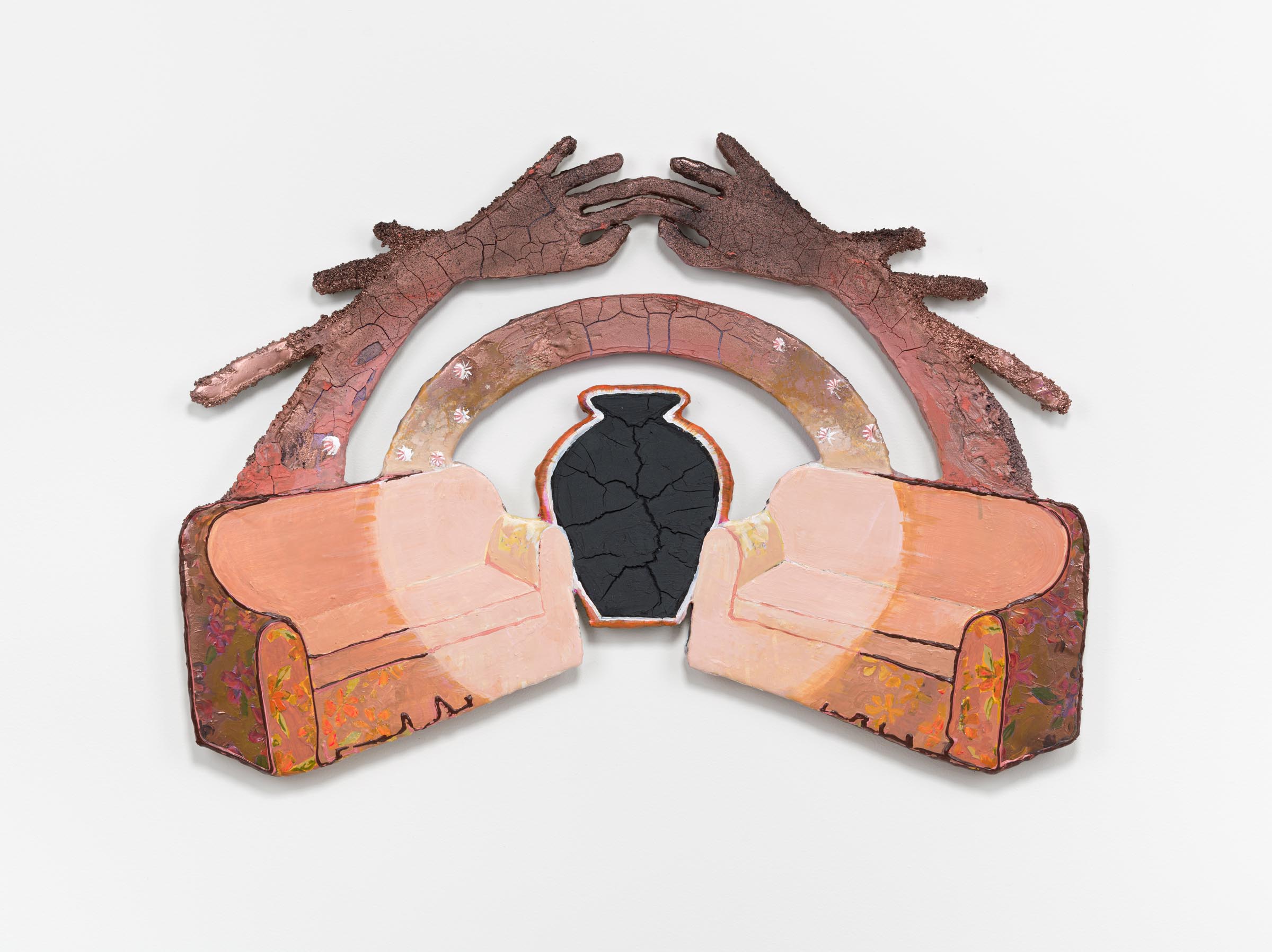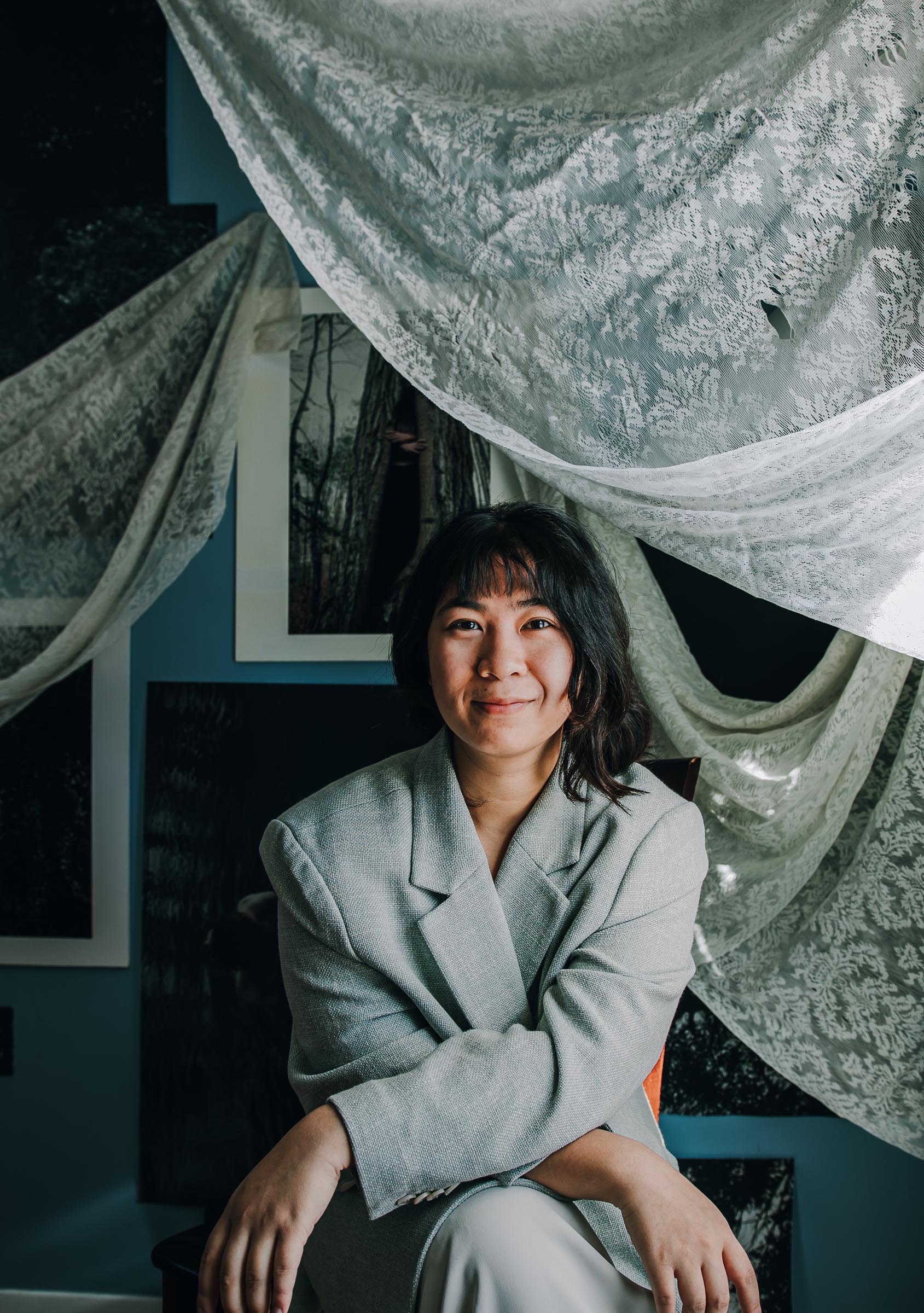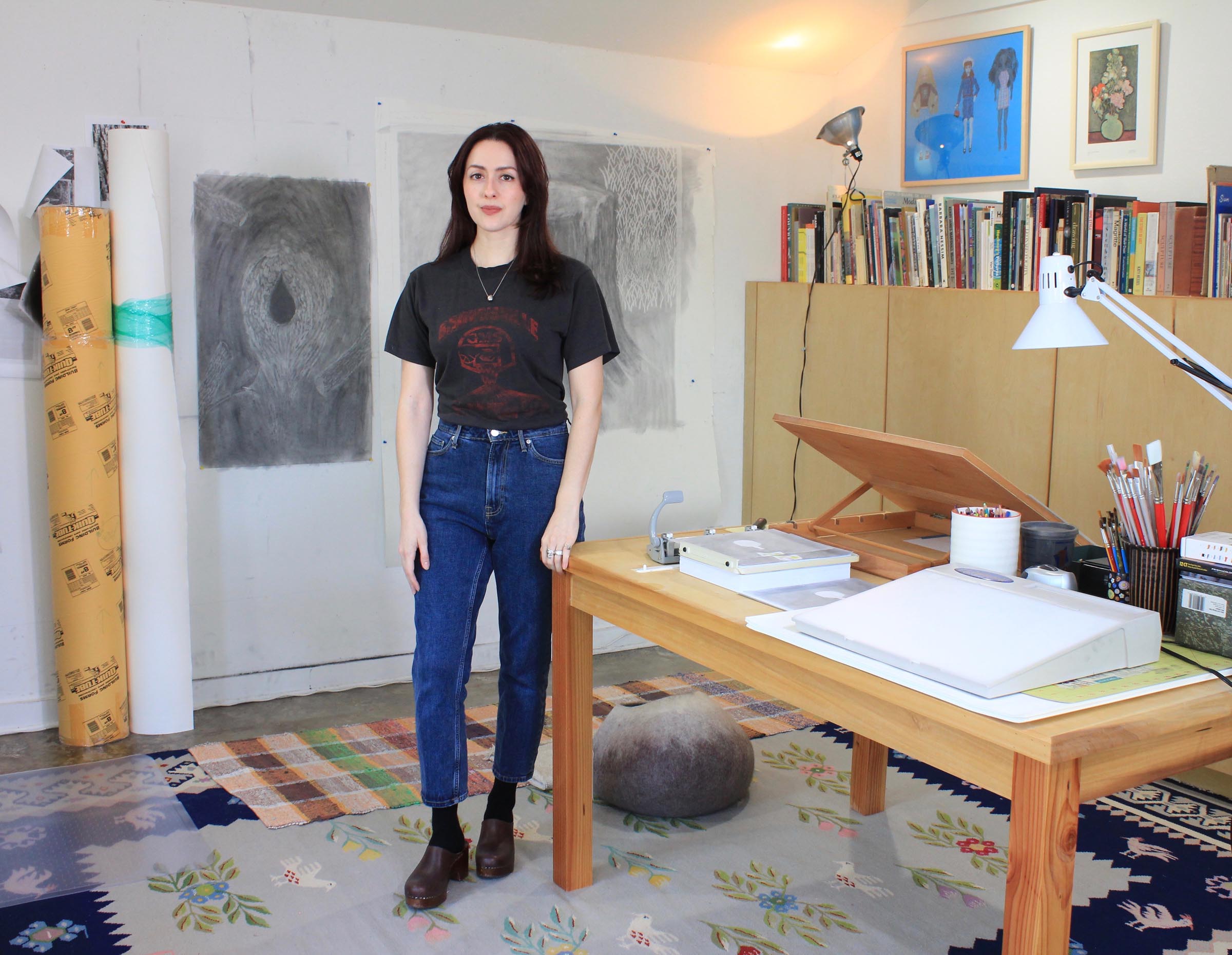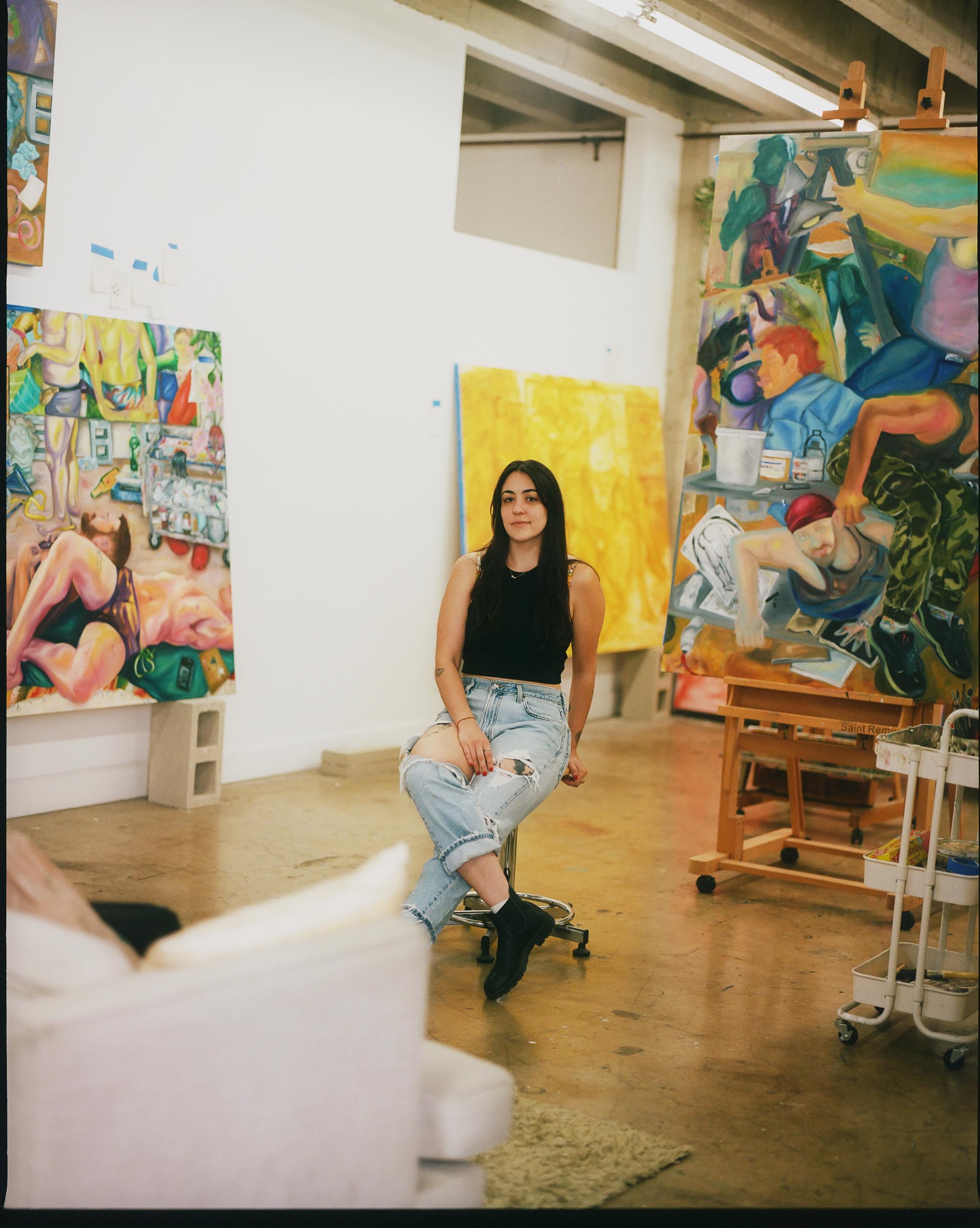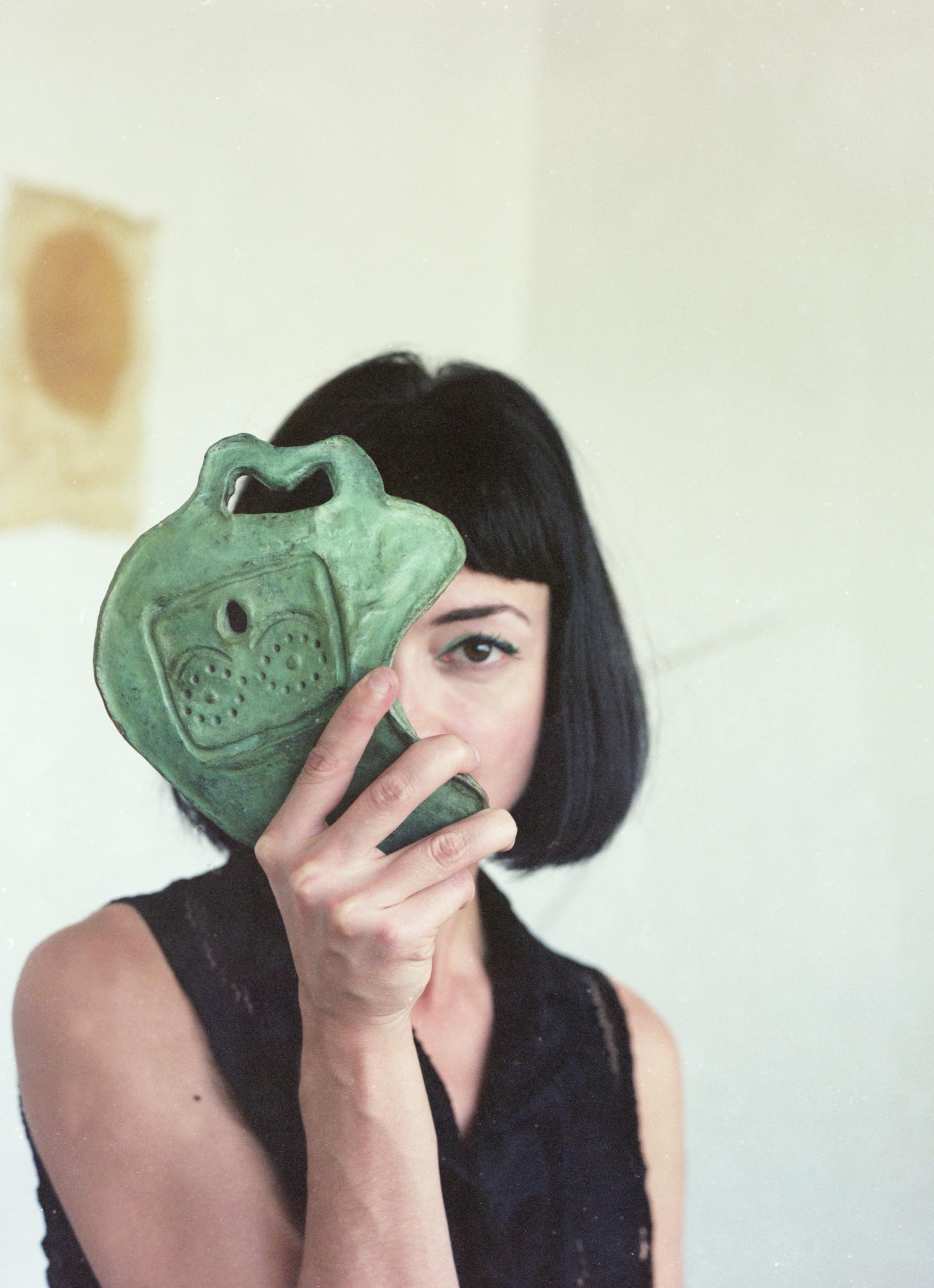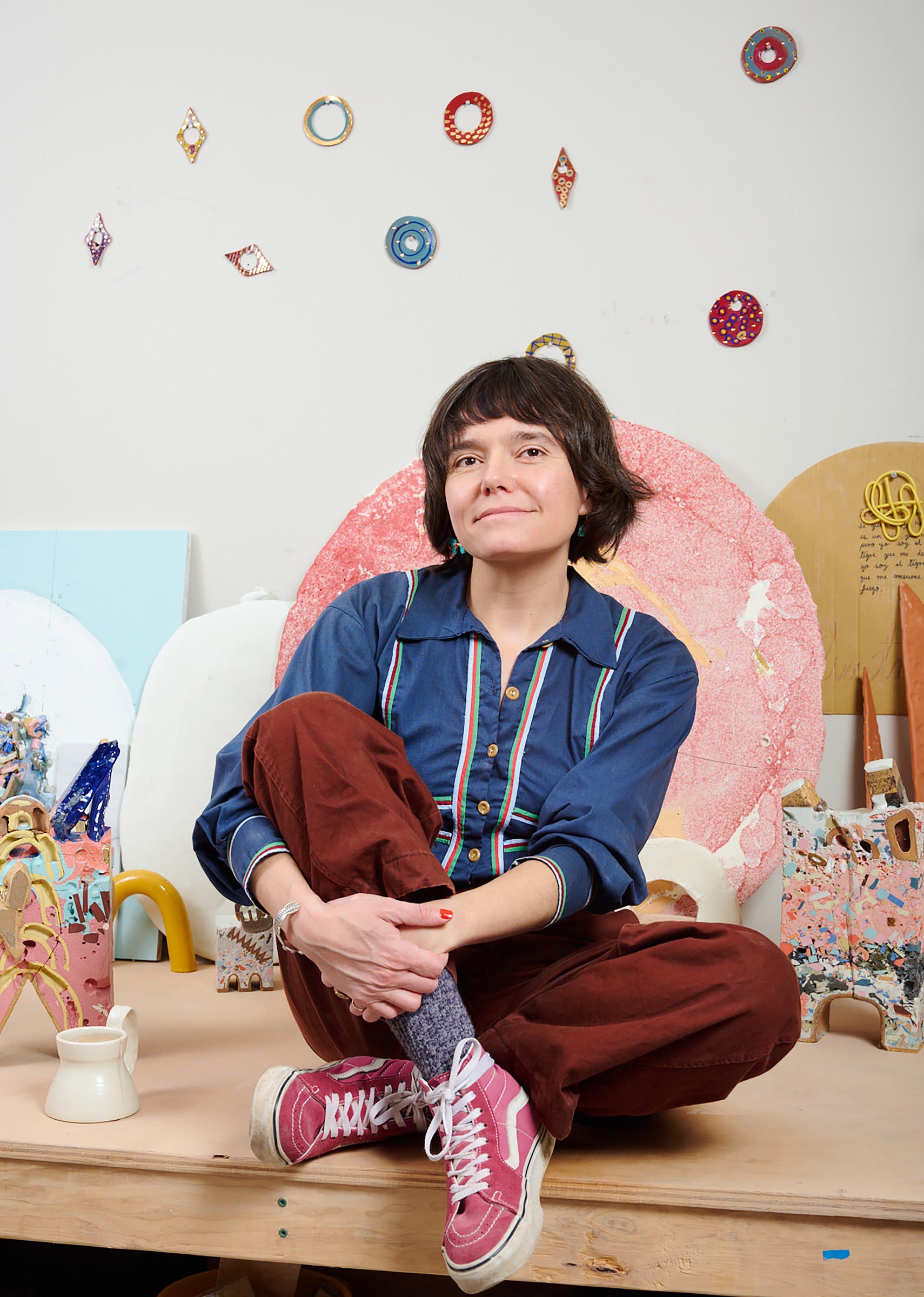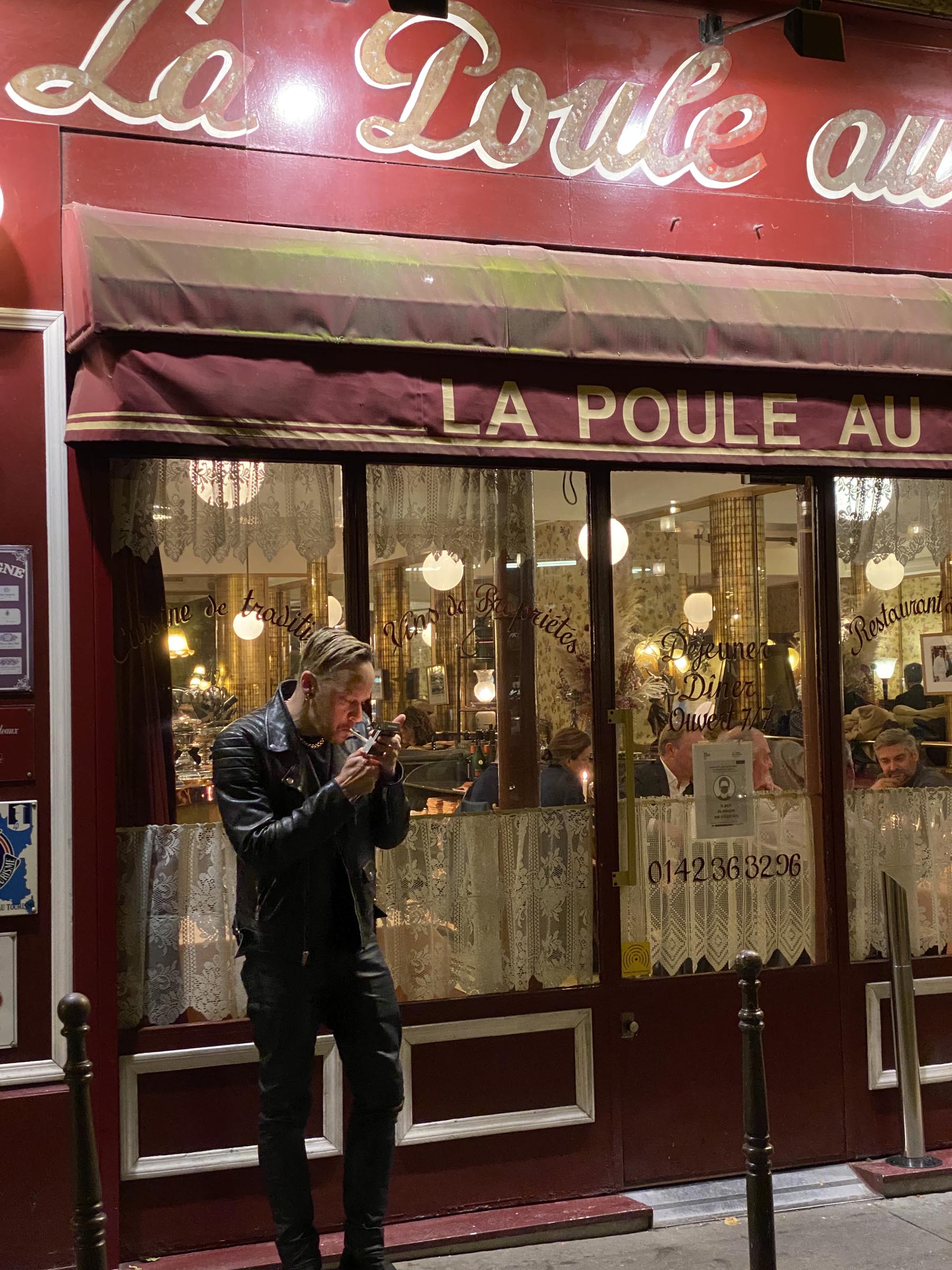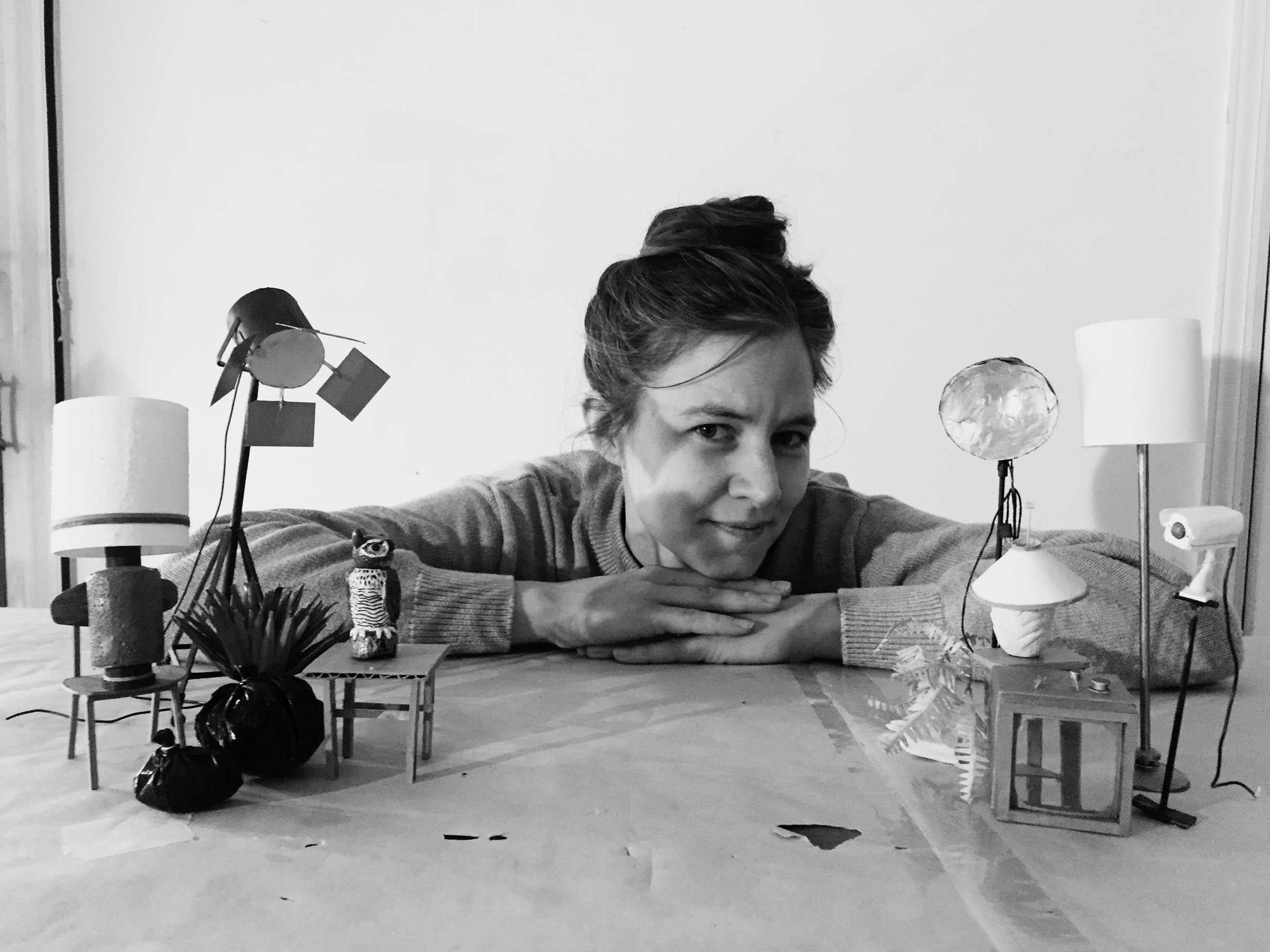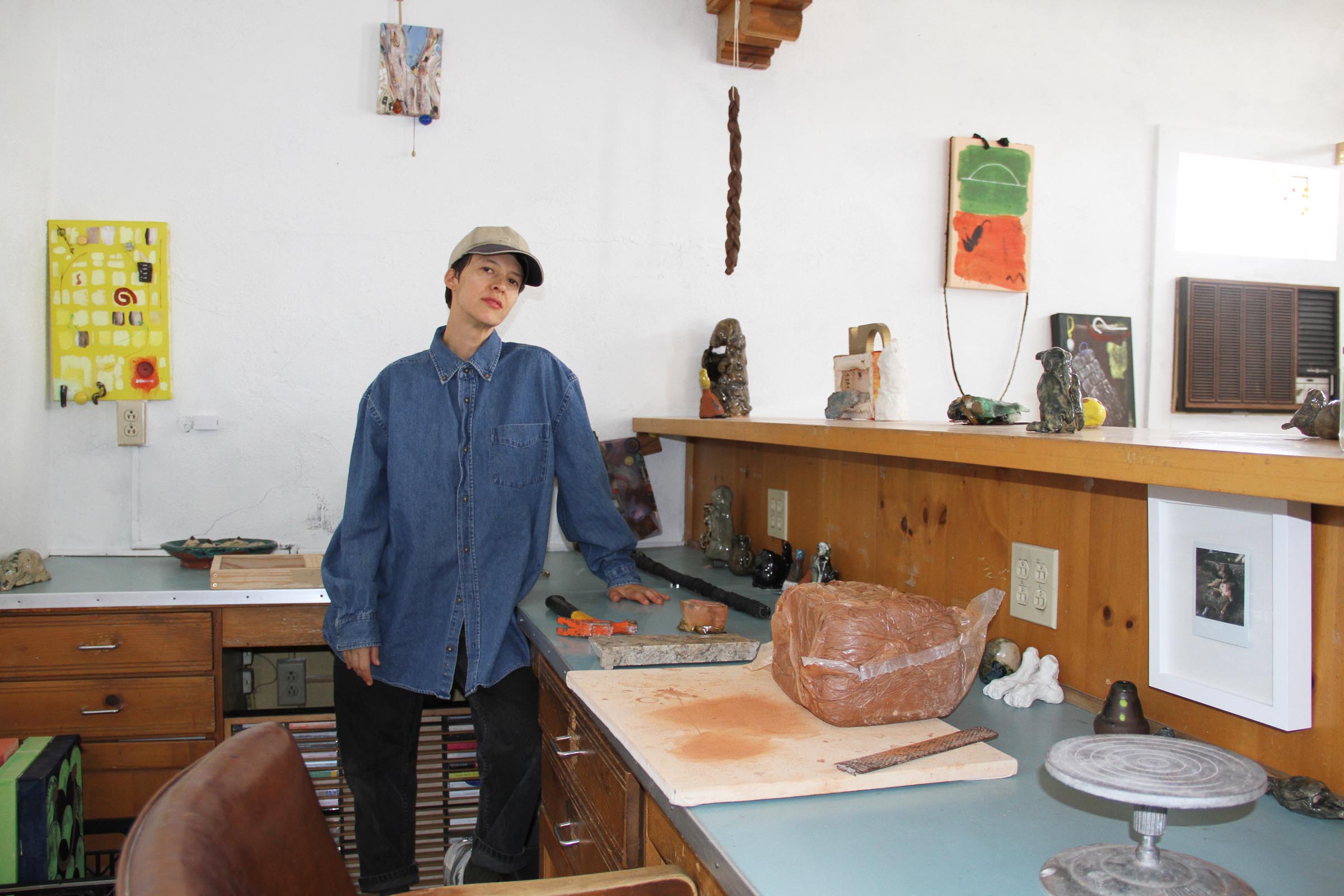How did you get into making art?
Longing for a connection with my father who died when I was four months old, I would place my hands in the indentations of his ceramics pieces as a way for my hand to touch his. These early childhood experiences made me aware that art objects hold some of the essence of their maker, even in their maker’s absence. I don’t remember a moment when I decided to start making art; I was always making. Art was a language for reaching across distances that felt impossible to cross. I needed that language to heal myself and I still need that language to convey the beauty in the connection between the living and the departed.


What are you currently working on?
I’m working on expanded paintings that depict the residual energy of lives lived, found in domestic objects from living rooms. This year I started incorporating mirrors into some of the works, attaching the expanded paintings to a functional bench, and shifting to a larger scale.
I’m also playing with repairing broken ceramic work made by my late father. Here, I’m wanting to engage with materials to think about his specific ways of handling them, and where that is in conflict or harmonious with my own visual language. This isn’t work that I plan to show, rather work I make to nourish my practice and my curiosity.
Art objects hold some of the essence of their maker, even in their maker’s absence.
Rachael Zur

What inspired you to get started on this body of work?
I’ve long been interested in how a contour line can be painted on a surface and convey an object, while that same line can then fall into abstraction. Simultaneously I’ve always been drawn to tactile sculptural surfaces. I wanted to find a way to have the contour lines in my work move across the surfaces of the work, defining imagined spaces, and also define the edges of the support surface that the painting rests on. Merging these interests—line and sculptural physicality—led to the visual language that I’m using now.
A little over three years ago, while I was working out these formal considerations, I lost one of my closest friends. I had already been thinking about domestic spaces as a way to express both absence and presence of a person being felt simultaneously, but the loss of my friend made this inquiry personal and urgent. I began commingling images of my late friend’s living room with the living rooms belonging to other people I have loved and lost. As the work progresses, I see it as being less about my specific losses and more about honoring the evocative nature domestic spaces and their capacity for storytelling generally.

Do you work on distinct projects or do you take a broader approach to your practice?
My interest in visual perception and how a line can suggest a recognizable form—then fall into abstraction—has always been a part of my work. The work that I’m making now pays homage to how domestic spaces hold remaining tenderness from the departed. It’s more than just a specific project. Honoring the spiritual nature of ordinary objects in homes feels like a quest that I’m on, which I anticipate will lead to related projects connected to domestic spaces.

What’s a typical day like in your studio?
Preparing the irregular shaped forms that I paint on takes careful planning. Drawing out the forms on paper and reworking them before building the form is the first step. I take my time before committing the labor and materials necessary to build those forms, to be sure that the contour lines I’m committing to for the edge of the piece are engaging in their own right. I have weeks where my days are about sketching out what I plan to build and other weeks where I get to paint.
My studio is at my home in my garage—which I used to be a bit embarrassed to admit—though the studio’s close proximity has really allowed me both to engage with my work for long stretches of time and to get in little bits of working time throughout the day. Earlier in the pandemic, my three children were all learning from home. Being able to go between my studio and check to make sure that they were on task with their schoolwork was a big benefit. It allowed me to devote more to my studio practice than if my studio had been outside the home. Now that they are back to in-person school, I’m working with less interruption. When my kids are home, I sneak additional time in the studio while they are working on their homework or after dinner.


Who are your favorite artists?
Jessica Jackson Hutchins and Kristan Kennedy are two artists whose work I greatly admire, and who were also my mentors in grad school. I’m also very fond of the work of Elizabeth Murray, Sam Gilliam, and Frank Sella.
Where do you go to discover new artists?
Instagram has been a good source for finding the work of artists who show and work outside of my community. I also make a point to send along artist recommendations to my artist friends who in turn do the same for me.
Learn more about the artist by visiting the following links:










